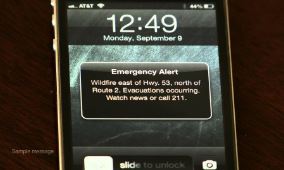
Improvements to WEA, like more granular geo-location targeting capabilities, solutions for preserving messages, inclusion of multimedia elements and two-way interaction would make it more likely local public safety and emergency management organizations would use it, Harris County told the Commission in filed comments. Harris County “rarely” uses WEA now because it doesn’t want to potentially alert the entire county when an alert may only pertain to part of it; Harris County and others don’t want to over-warn the public, ultimately making them ignore the alerts.
Yet Verizon says device-based geo-targeting methods could congest carrier networks. “They require that the alert originator’s geographic area ‘polygon’ transmit to the handset, which would require data compression or other clear limits to ensure that limited bandwidth for broadcasting WEA alert is used efficiently and that an alert does not lose too much of its 360 character capacity,” Verizon tells the agency in filed comments reviewed by Inside Towers. Network capacity could also be impacted if many devices in the same cell sector need to communicate with the network to get location and map updates. How quickly a device can obtain a location fix, may depend on whether the device’s location capabilities are turned on, a factor under the control of the handset manufacturer rather than the service provider; and the device’s ability to reach out to a third party (non-carrier) location server.
The Cellular Telecommunications Industry Association (CTIA), meanwhile, says its members are committed to working with public safety and alert originators to develop the ability to receive and transmit WEA alerts with embedded references on their networks, and to work with mobile device and operating system vendors to implement embedded, “clickable” references. But CTIA says there needs to be more time for development and testing.
August 23, 2017




Reader Interactions